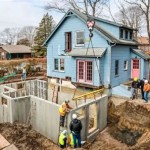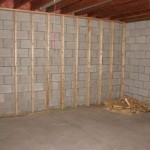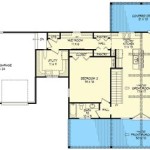How Much Does It Cost To Build A Small Bathroom In The Basement?
Adding a bathroom to a basement can significantly increase a home's value and functionality. The cost to undertake such a project, however, can vary widely depending on a multitude of factors, including the size of the bathroom, the complexity of the plumbing and electrical work, the quality of materials chosen, and the labor costs in a specific geographic area. Accurately estimating the budget required beforehand is crucial to ensure the project stays on track and prevents unforeseen financial burdens. This article provides a comprehensive breakdown of the costs associated with building a small bathroom in a basement.
A “small bathroom” in this context typically refers to a space ranging from 30 to 50 square feet. This size generally accommodates a toilet, a sink, and either a stand-up shower stall or a compact bathtub. Costs can be significantly higher for larger or more luxurious bathroom builds. Understanding the potential expenses involved in each stage of the construction process is essential for responsible budgeting.
Key Point 1: Core Construction and Plumbing Costs
The foundation of any basement bathroom project rests on proper construction and, most importantly, the installation or extension of plumbing lines. This often constitutes the most significant portion of the overall budget. Several sub-factors influence this expense.
Plumbing Installation: The primary cost is tied to connecting the new bathroom to the existing plumbing system. If the basement plumbing is readily accessible and close to the planned bathroom location, the cost will be lower. However, if the connection requires significant excavation or running pipes across a considerable distance, the expense increases substantially. The type of plumbing system also plays a role; for example, installing a sewage ejector pump might be necessary if the basement is below the main sewer line, adding a considerable expense, typically ranging from $500 to $1,500 or more for the pump and installation.
Labor costs for plumbing installation can range from $75 to $150 per hour, or even higher depending on the plumber's experience and location. A simple toilet and sink connection might take a day or two, while more complex installations involving sewage pumps and extensive pipe running can take several days. Estimates from multiple plumbers are crucial to ensure a competitive rate and a comprehensive understanding of the scope of work.
Framing and Drywall: Once the plumbing is roughed in, the next step involves framing the bathroom walls and potentially building a small partition to separate the toilet area from the sink or shower. Basic framing materials like lumber are relatively inexpensive. However, drywalling, taping, and mudding are labor-intensive and impact the budget. Expect to pay roughly $2 to $4 per square foot for drywall installation, including materials and labor. Sealing the drywall with primer and paint adds another layer of expense.
Flooring: Basement flooring needs to be moisture-resistant. Popular choices include ceramic or porcelain tile, vinyl flooring, and engineered wood. Tile tends to be a durable and aesthetically pleasing option but requires professional installation. The cost of tile installation varies depending on the type of tile and the complexity of the pattern, ranging from $5 to $15 per square foot, including materials. Vinyl flooring is a more affordable and easier-to-install alternative, costing roughly $3 to $8 per square foot. The cost will vary according to quality.
Key Point 2: Fixtures, Finishes, and Electrical Work
After the structural elements are in place, selecting and installing fixtures, finishes, and handling electrical work constitute the next set of expenses. These costs are often a reflection of personal preferences and desired quality.
Toilet and Sink: Toilets range in price from around $100 for basic models to over $500 for high-efficiency or smart toilets. Sinks also have a wide price range, from $50 for a simple pedestal sink to several hundred dollars for a vanity sink with a cabinet. Installation costs for both fixtures typically range from $100 to $300 each, depending on the plumber's hourly rate and the complexity of the installation.
Shower or Tub: Installing a shower stall is generally less expensive than installing a full-sized bathtub in a basement bathroom. A basic shower stall kit can cost anywhere from $300 to $800, plus installation. A bathtub can range from $500 to several thousand dollars, especially for jetted or freestanding models. Installation complexity and the need for additional plumbing adjustments contribute to the higher cost. Choosing pre-fabricated units can often reduce labor costs significantly.
Lighting, Ventilation, and Electrical Outlets: Adequate lighting and proper ventilation are essential in a basement bathroom. Installing recessed lighting, a vanity light, and an exhaust fan are common requirements. An exhaust fan helps remove moisture and prevent mold growth. The cost of these fixtures can range from $50 to $300 each, plus installation. Adding electrical outlets for hairdryers, electric razors, and other appliances is also necessary. Electrical work should always be performed by a licensed electrician to ensure safety and compliance with local codes. Electrical work costs can average $50 to $100 per hour.
Finishing Touches: These include mirrors, towel racks, toilet paper holders, and other accessories. These are typically the least expensive items in the budget, but they contribute to the overall aesthetic and functionality of the bathroom. Allocate a budget of at least $100 to $500 for these items, depending on the desired style and quality.
Key Point 3: Permits, Inspections, and Unexpected Contingencies
Beyond the physical construction and material costs, permit fees, inspection requirements, and unexpected contingencies can significantly impact the overall cost of building a basement bathroom. Ignoring these factors can lead to budget overruns and project delays.
Permits and Inspections: Building permits are generally required for any significant construction project, including adding a bathroom to a basement. Permit fees vary depending on the location and the scope of the work. Expect to pay anywhere from $100 to $500 or more for the necessary permits. Inspections are also required at various stages of the construction process, such as after plumbing and electrical work is completed. These inspections ensure that the work complies with local building codes and regulations. Failing an inspection can lead to costly rework and delays.
Unexpected Issues: Basements are prone to moisture and structural problems. Unexpected issues such as water damage, mold growth, or foundation cracks can arise during the construction process, requiring additional repairs and impacting the budget. It's wise to allocate a contingency fund of at least 10% to 20% of the total project cost to cover these unforeseen expenses. This buffer can prevent financial strain and keep the project moving forward.
Labor Costs and Contractor Fees: Hiring a general contractor to oversee the entire project can simplify the process and ensure that all aspects of the construction are properly coordinated. However, contractor fees can add to the overall cost. General contractors typically charge a percentage of the total project cost, ranging from 10% to 20%. While this adds to the expense, a reliable contractor can save time and money in the long run by managing the project efficiently and preventing costly mistakes. Obtaining multiple quotes from different contractors is essential to compare prices and services. Ensure that the chosen contractor is licensed, insured, and has a proven track record of successful bathroom renovations.
In summary, constructing a small bathroom in a basement involves a complex interplay of factors that determine the final cost. These costs span from the fundamental necessities of plumbing and framing to the finer details of fixture selection and adherence to regulatory burdens. A proactive, informed approach to budgeting and planning remains a crucial skill in managing project expectations and outcomes. Thorough assessment of the prevailing conditions alongside a practical contingency fund is the key to a triumphant realization of the project.

Cost To Add A Basement Bathroom Bright Green Door

Cost To Add A Basement Bathroom Bright Green Door

How Much Does It Cost To Add A Bathroom 2024 Data

Cost To Add A Basement Bathroom Bright Green Door

Cost To Add A Basement Bathroom Bright Green Door
How Much Does It Cost To Install A Bathroom In The Basement Quora

Cost To Add A Bathroom 2024 Guide Forbes Home

Adding A Bathroom To Basement Pros Cons Costs

Affordable Basement Bathroom Ideas Design On A Budget

What Is The Cost To Add A Half Bathroom Badeloft
Related Posts







